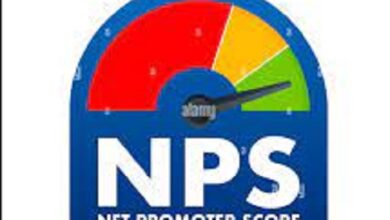Competitor definition business with direct and indirect competitors
Competitor
By competitor in the business, we understand the group of companies that offer a similar service or product or that direct their actions to the same market segment. Companies are legally constituted and registered to offer their goods or services and thus be able to compete in the market in the face of consumer demand and in turn obtain benefits. In this article we will provide you the definition of competitor in business.
Competitors in a company focus on attracting a target audience and offer their products or services that are in line with the market. An adequate competitive analysis allows to have knowledge of the companies that investigate everything that is related to their movements.
It is important to monitor the marketing of related companies, this gives the possibility of knowing what their actions are and the relationship they have with the market. Mostly companies visualize the weaknesses and strengths of their competition.
They must also be aware of their changes that arise in the market through the company’s analysts who are up to date with any external changes that arise. This process includes analysis of competition, market, supply, demand and customer behavior.
The different types of competitor that exist within the market are shown below:
- Random competitor : It is the competitor who does not have a predictable behavior, where care must be taken to avoid strong competition in the market. Due to this, it does not allow planning in case assets appear, this indicates that you must be attentive to any movement.
- Selective competitor : This competitor can react to any specific action and not to other circumstances. It is likely that you do not have a planning that determines the importance of some aspects related to competitive actions.
- Fast competitor : This is a competitor who reacts quickly in the event of a situation that is considered invasive, may have a reaction related to a self-defense action and prevent the competition from taking the lead or copying the products or services.
The difference between direct and indirect competitors
First, it is important to understand the concepts of direct and indirect competitors and what is the difference between them in order to identify them more clearly.
direct competitors
These are organizations that offer the same line of products and services in order to serve the same target audience, that is, the same consumers in the same market niche in which your company operates.
This type of competitor is the most obvious. As an example, think of Coca-Cola and Pepsi. This makes it easier to know who your direct competitors are.
Indirect competitors
Indirect competitors can be more difficult to identify. These are companies that offer products or services that differ from those your company offers.
However, in certain circumstances, they can compete for the preference of their target audience, with a clear and determined strategy of product substitution. A consumer may prefer to eat a coxinha instead of a hamburger, for example.
At the same time, when making a significant financial commitment, such as buying a house, buying a car, or investing in a business, consumers tend to be more cautious about other expenses.
From this point of view, even the purchase of clothes can be competed with these expenses, or perhaps enrollment in a university course needs to be postponed until a budget gap occurs.
Another aspect that must be considered refers to competitors that offer inferior products in quality. Some companies do not classify them as direct competition, as the public that buys one product does not buy the other. A good example would be high-end furniture and low-resistance plastic.
Many entrepreneurs are even offended when comparisons occur in these cases, even considering these companies as indirect competition. However, it is important to know and assess these markets as they can generate future opportunities.
The importance of knowing your competitors
Surveying and getting to know direct and indirect competitors is important, as it helps to understand more precisely how they face crises and opportunities, it also helps to know the best practices in the market and how to adapt them to your company’s processes.
This analysis allows gathering information from the competition, such as:
- main strengths and weaknesses,
- action strategies;
- product differentials and appeals;
- operating methods,
- average sales ticket;
- pattern of work in the market .
With this analysis, it is possible to carry out a comparison with your internal processes and recognize the points that need to be refined. Based on the information collected, it is also possible to make your price more attractive and competitive, improve your dissemination strategies and the relationship with your target audience.
Competitor Examples
- The competitor in the market is the natural or legal person who enters into competition within it by offering goods or services that generate financial benefits.
- The competitor refers to the individual, company or product with similar characteristic references that can meet the needs of the target audience.
- By increasing competition, companies strive to be more productive and help make better use of resources and favor economic conditions.




